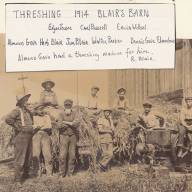Dear Mad River Valley residents,
We just learned that Verizon will not be attending the January 9 Warren Planning Commission meeting, and that Verizon intends to re-notice its proposal for a cell tower in Warren. We heard this indirectly so we don’t know precisely what this means in terms of the go-forward process or even where Verizon is in its thinking on the proposed tower at the Airport Road site. What we do know is that Verizon, which is required to meet with the town, has now declined three invitations to meet with the Warren Planning Commission and residents as well as an invitation to meet with the Central Vermont Regional Planning Commission (CVRPC).
Re-noticing the proposal means there will be a new 60-day time period during which Verizon will have to provide information, answer questions, and meet with the town of Warren and the CVRPC. And while we can’t state this with certainty, we are hopeful that a strong and united response from our town boards and Valley residents regarding the lack of justification for the Verizon proposal, as well as the inappropriate location and height of the proposed tower, will have a strong impact resulting in a Verizon decision to pull back and rethink their approach.
While this Verizon proposal is in abeyance for now, however, there is still work to be done in order to ensure that Warren has better protections in place to address all cell tower proposals going forward. In particular, we want to focus our energy in the near term on revising and enhancing the telecom provisions in the draft Land Use and Development Regulations (LUDRs) recently delivered to the select board. As a number of people have pointed out, the Verizon proposal has had the beneficial effect of focusing our community’s attention on the telecom provisions in the draft LUDRs.
Those draft revised provisions, for some reason, omitted important existing protections in the current LUDRs which limit the height of cell towers, preclude placement of a cell tower on a hilltop or ridgeline, and prevent adverse impacts to the character of the neighborhood.
The draft provisions have not yet incorporated critical common elements included in the telecom zoning ordinances recently adopted by at least 12 other Vermont towns, such as limitations on cell tower heights to prevent them from extending above the treetops by more than 20 feet, rigorous co-location requirements requiring existing tower capacity be maximized, and obligations to move or downsize the towers to avoid FAA regulations to light or conspicuously mark the towers for aviation safety.
The select board is issuing a notice for a public meeting on the draft LUDRs for February 14. It will be important that everyone concerned about this matter attend that meeting and advocate to revise and strengthen the telecom provisions currently in the draft LUDRs.
Longer term, the initiation of the recent Public Utility Commission (PUC) process under Vermont Statutes Annotated Section 248a has made it clear that the town’s first line of defense is its Town Plan. PUC and Vermont Supreme Court decisions require that the Town Plan be specific, prescriptive, and regulatory in nature in order for its intentions to be honored by the PUC when it comes to restrictions on where cell towers can be placed and how tall or obtrusive they can be.
We need to work in collaboration with town officials on adapting and strengthening our Town Plan in light of the regulatory environment. In addition, Kari Dolan, the Mad River Valley representative to the House, has introduced reform legislation on VSA Section 248a. Kari’s proposed legislation will require the cell tower companies to provide more information to towns and residents upfront, preclude them from signing binding contracts with landowners before they obtain final PUC approval, and require them to reimburse towns for their costs if they have to intervene to protect their interests. This reform legislation will go a long way toward leveling the playing field both for towns and landowners.
John Egan, Carole Parker, Dan Reicher, Justin Cook, Ryan Bowan, and Connie Colman.












